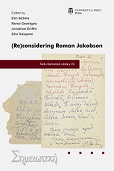Incompatibility, unlimited semiosis, aesthetic function
Incompatibility, unlimited semiosis, aesthetic function
Author(s): Tyler James BennettSubject(s): Semiotics / Semiology, Aesthetics, Theory of Literature
Published by: Tartu Ülikooli Kirjastus
Keywords: Roman Jakobson; semiotics; unlimited semiosis; incompatability; aesthetic function;
Summary/Abstract: Jakobson claims that poetry exemplifies the mechanism of creativity because it entails the interaction of at least two different principles of organization to determine its signification, and this internal heterogeneity is what insures a plurality of possible interpretations. The central tenet of the poetic function is that the principle of equivalence is projected from the axis of selection to the axis of combination (Jakobson 1960: 358). Equivalence within nonpoetic verbal expressions is prevailingly determined by the horizontal axis of temporal sequence or, in Jakobson’s terms, the axis of combination. The projection of the principle of equivalence to the axis of combination overlays the predominantly metonymic operations at the level of the syntagm with another signification system characterized by the vertical paradigmatic selection axis according to rules of similarity and metaphor. In poetry, attention is drawn to these spatial relations by means of such devices as rhyme, rhythm, meter, and other secondary modelling systems. The importance of the poetic function in Jakobson however extends beyond the domain of poetry and literature. The poetic function in his communication model designates the ways in which the words used do not correspond to their usual referents, but to some other features or words, particularly to new or unexpected ones. In his statement of the autonomy of the aesthetic function (Jakobson 1996[1987]: 378), Jakobson contends that the basic link of incompatibility and creativity that characterizes literature is independent of that modality – its autonomy consists in just this. In the view of biosemiotics for example, incompatibility is a criterion of all sign processes whatsoever (Kull 2015).
Journal: Tartu Semiotics Library
- Issue Year: 2021
- Issue No: 23
- Page Range: 149-163
- Page Count: 15
- Language: English
- Content File-PDF

